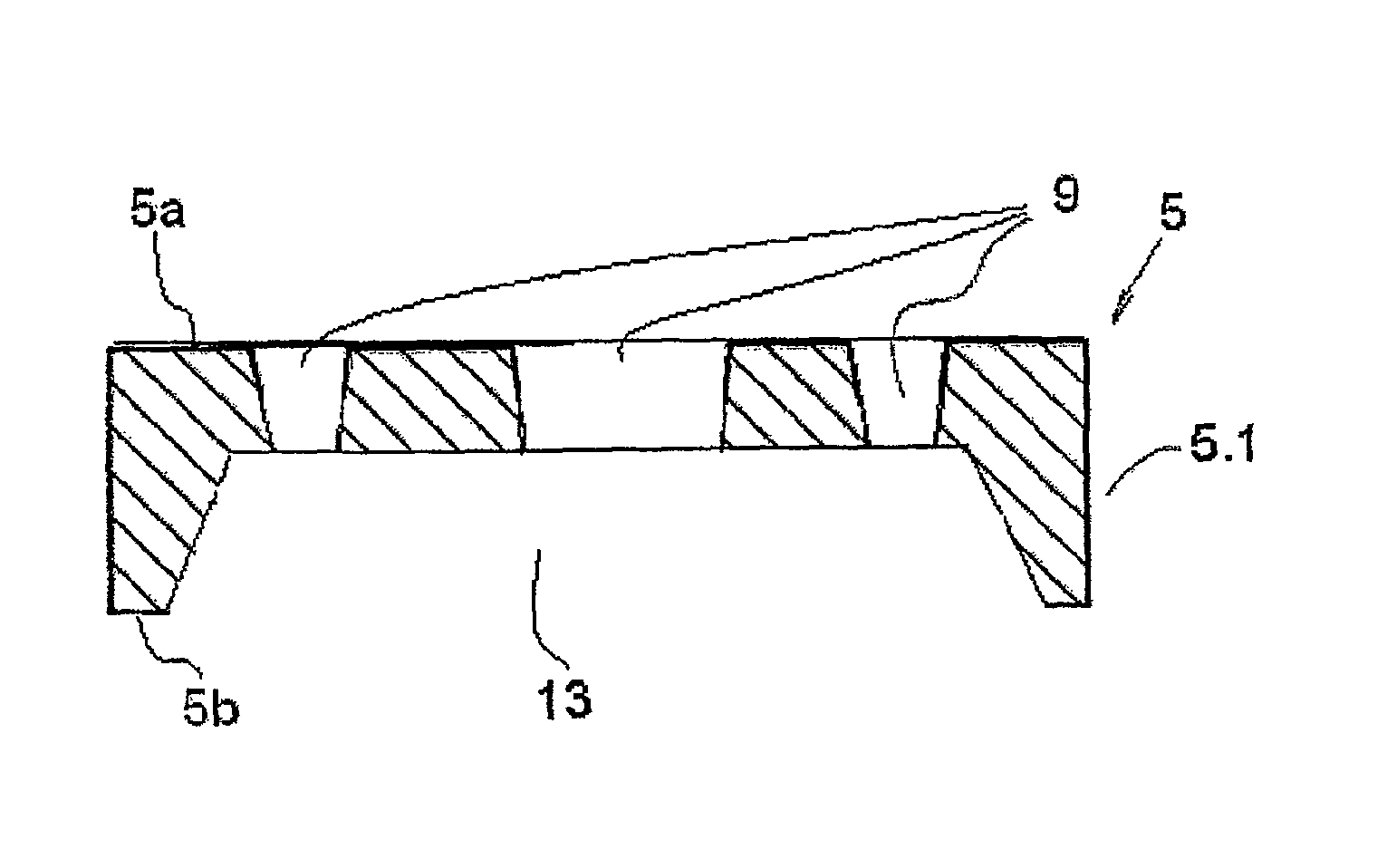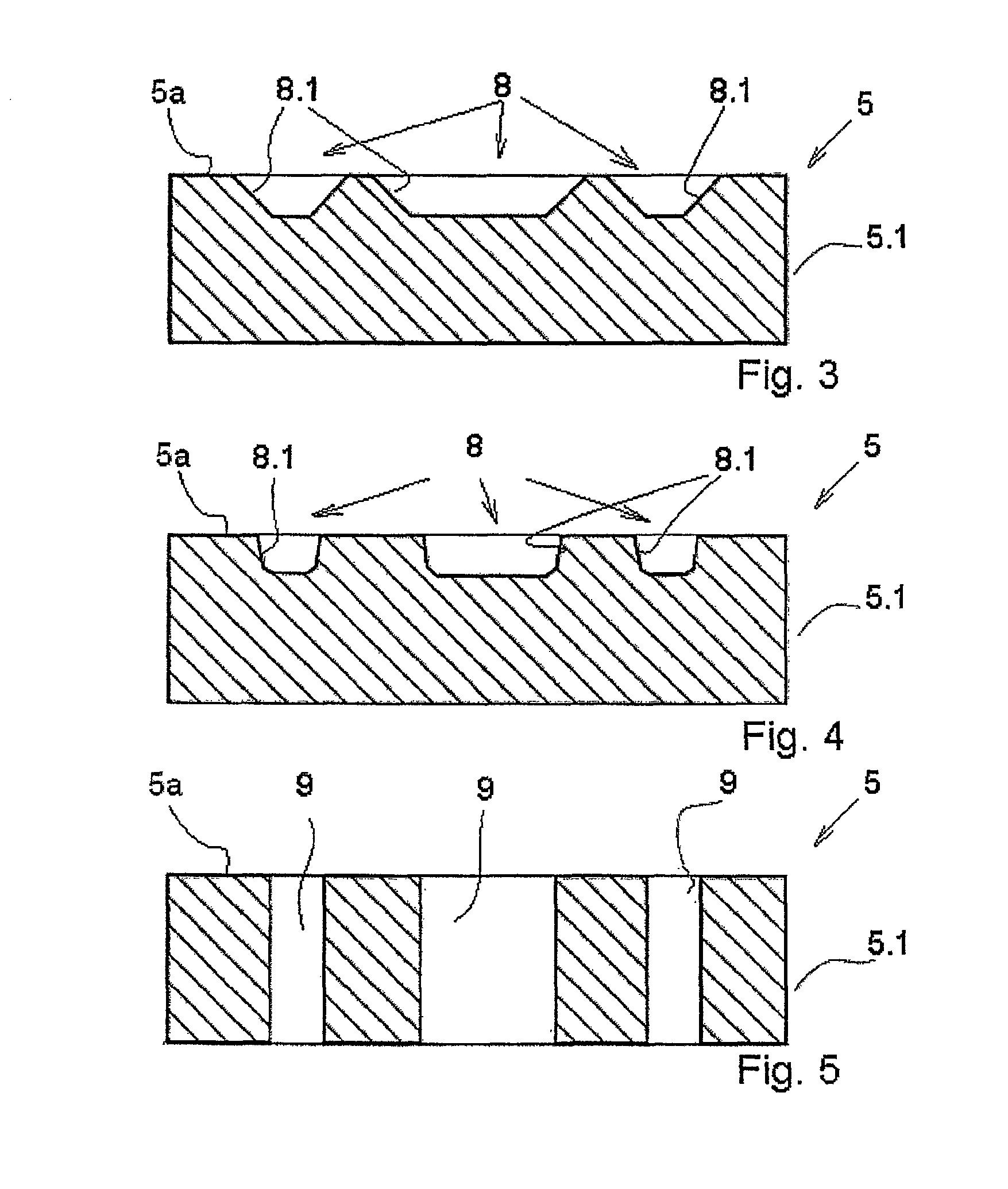Method and apparatus for structuring components made of a material composed of silicon oxide
a technology of silicon oxide and components, applied in electrical devices, decorative surface effects, decorative arts, etc., can solve the problems of only allowing significant etching rate, poor comparison of glass structure in large etching depths (greater than 10 m), and significant increase in mechanical stress, etc., to achieve good selectivity of mask materials, high speed, and great variability in etching profiles
- Summary
- Abstract
- Description
- Claims
- Application Information
AI Technical Summary
Benefits of technology
Problems solved by technology
Method used
Image
Examples
Embodiment Construction
[0043]FIG. 1 shows a schematic illustration of an apparatus according to the invention employing a first energy source 1.1 in the form of a high-frequency plasma source for generating a plasma with the capability of changing the ion energy, which is coupled to a receptacle in the form of a substrate carrier 2. The substrate carrier 2 is heatable using a heater 3, situated on the substrate carrier 2, in order to achieve the required substrate temperature. The first energy source 1.1 and the heatable substrate carrier 2 are situated here in the vacuum chamber 4 (or near the vacuum chamber according to one illustrative embodiment which is not shown), in which a suitable gas atmosphere of a fluorine gas mixture prevails during the plasma etching. The desired partial vacuum is retained in the vacuum chamber 4 using a pump system (not shown). The first energy source 1.1 for electrical plasma generation, which is also used for generating the bias voltage (which influences the ion energy), ...
PUM
| Property | Measurement | Unit |
|---|---|---|
| temperature | aaaaa | aaaaa |
| temperature | aaaaa | aaaaa |
| bias voltage | aaaaa | aaaaa |
Abstract
Description
Claims
Application Information
 Login to View More
Login to View More - R&D
- Intellectual Property
- Life Sciences
- Materials
- Tech Scout
- Unparalleled Data Quality
- Higher Quality Content
- 60% Fewer Hallucinations
Browse by: Latest US Patents, China's latest patents, Technical Efficacy Thesaurus, Application Domain, Technology Topic, Popular Technical Reports.
© 2025 PatSnap. All rights reserved.Legal|Privacy policy|Modern Slavery Act Transparency Statement|Sitemap|About US| Contact US: help@patsnap.com



